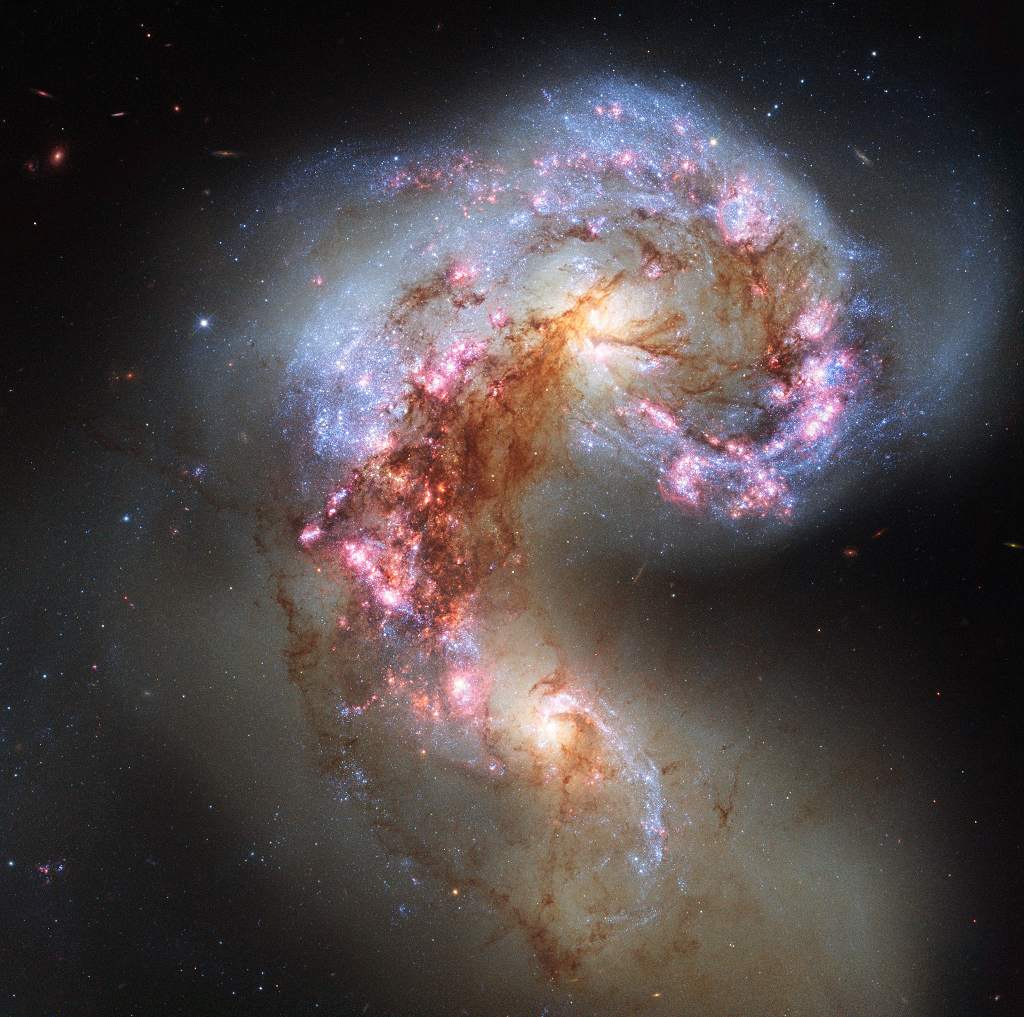2020年12月03日
The Antennae Galaxies in Collision
Image Credit: ESA/Hubble NASA
Explanation: Sixty million light-years away toward the southerly constellation Corvus, these two large galaxies are colliding. The cosmic train wreck captured in stunning detail in this Hubble Space Telescope snapshot takes hundreds of millions of years to play out. Cataloged as NGC 4038 and NGC 4039, the galaxies’ individual stars don’t often collide though. Their large clouds of molecular gas and dust do, triggering furious episodes of star formation near the center of the wreckage. New star clusters and interstellar matter are jumbled and flung far from the scene of the accident by gravitational forces. This Hubble close-up frame is about 50,000 light-years across at the estimated distance of the colliding galaxies. In wider-field views their suggestive visual appearance, with extended structures arcing for hundreds of thousands of light-years, gives the galaxy pair its popular name, The Antennae Galaxies.
Tomorrow’s picture: pixels in space
碰撞中的触须星系
影像提供: ESA/Hubble NASA
说明: 在南天乌鸦座方向6千万光年远之处,这二个大星系正撞成一团。这幅哈伯太空望远镜影像,细致的记录下这种通常历时数亿年的过程,在某瞬间碎片四溅的景象。像影像中这二个编录号为NGC 4038及NGC 4039的星系互撞时,它们内部的恒星通常不会撞在一起,不过气体与尘埃大分子云会,并在撞击中心附近触发剧烈的恒星诞生活动。而所形成的新星团和星际物质,在强大重力的作用下,或混杂成团或被甩飞到外围。以这对互撞星系的估计距离来换算,这张哈伯特写影像的跨幅约有50,000光年。在更大范围的影像里,因长达数十万光年弧形结构聚成的形状,让这对星系博得触须星系的令名。
明日的图片: pixels in space







